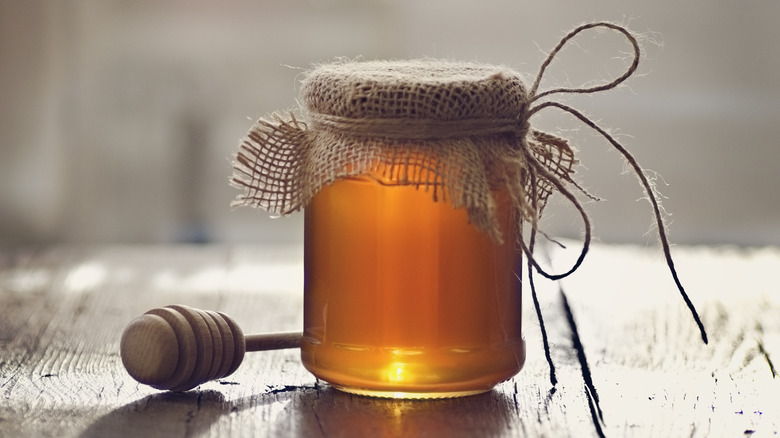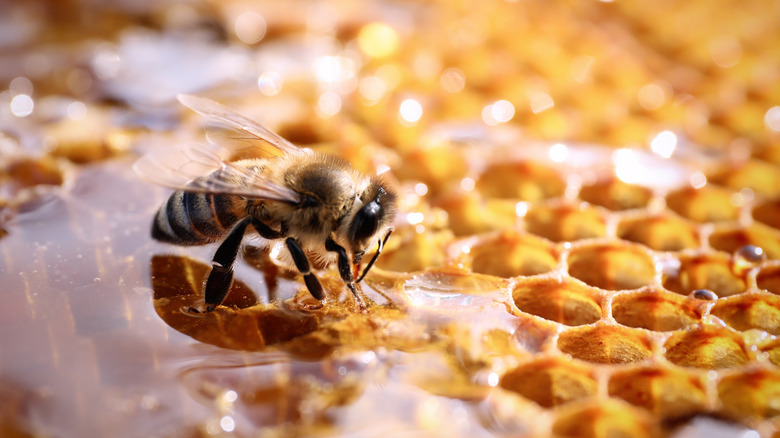What To Do When Your Honey Crystallizes (And How To Prevent It From Happening Again)
Despite its sweetness, trying to get crystallized honey out of the bottom of a jar can leave you feeling bitter. It's sticky to begin with, and when it hardens, it's nearly impossible to dig out. If it comes in one of those adorable bear-shaped bottles, forget it. There's no way you're going to squeeze it out. But just because the honey has solidified doesn't mean that it's gone bad; after all, archaeologists found a jar of honey in King Tutankhamun's tomb in 1922 that (allegedly) was still good after thousands of years. So, how can you get this golden goo back to its original, liquid-like state? Just add some heat.
The best way to do this is by placing the jar or bottle of honey in a bowl of warm water until it has softened enough to flow again. But, there's something you should know before heating honey. Because bees keep their hives between 94 and 96 degrees Fahrenheit, it's important to not let the honey exceed 95 degrees Fahrenheit. If it does, it will lose much of its nutritional value and antibacterial components, and if it gets way too hot, it will start to caramelize. In order to prevent crystallization in the first place (even though it's a natural process), keep honey stored below 50 degrees Fahrenheit and let it come to room temperature before you use it. If you use it pretty often, store it between 70 and 80 degrees Fahrenheit, which will help delay it getting gritty.
Why does honey crystallize?
If you don't know the specifics, it can be hard to guess what honey actually is. Scientifically speaking, honey is a solution that is created when bees dissolve a solute (the sugars from flower nectar, fructose and glucose) in a solvent (a little bit of water). This results in the liquid sunshine, although it doesn't stay fluid forever. Because the mixture is supersaturated, meaning there is more sugar than there is water, the sugar can't stay dissolved forever and eventually crystallizes.
Not all honey solidifies at the same rate. Because the particles in processed honey, such as pollen and naturally-occurring yeasts, have been filtered out under heat and pressure, it crystallizes more slowly than its raw counterpart. Raw honey contains traces of beeswax and pollen, which provide places for sugar crystals to form, thus quickening the process. Furthermore, different types of honey, such as clover and orange blossom, will crystallize at varying speeds because each type of flower nectar has differing amounts of fructose and glucose, with the latter being the quicker of the two to form crystals.
Even though crystallization is a sign that your honey is doing what it should, it's not always the easiest to work with and doesn't feel so good in the mouth. So remember, storing it at the correct temperatures will help prevent or slow this process, and if it does happen, heating it up just a little will smooth out the sticky-sweet situation.

